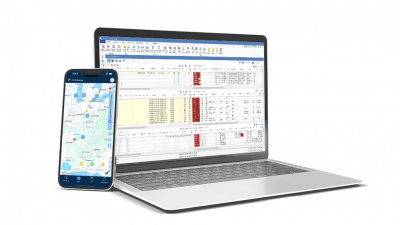It’s no surprise that demand for pets skyrocketed. From the outset of the pandemic, everyone was spending more time at home and needed friendly company. Many people are still working from home, and demand is still prominent for pet supplies such as food, toys and medication.
The numbers prove it. According to the Pet Food Institute, domestic dog and cat food sales were approximately $40 billion last year, with about $1.7 billion in exports to more than 90 countries. However, due to shipping challenges felt by nearly every industry over the last couple years, there’s also been an ingredient shortage for pet food. It’s reported that ingredient costs have risen 8-20%, with dramatic price increases for corn and soybean derivatives, which are key ingredients in many dog and cat food formulations.
As challenges within the pet supply industry appear to be piling up, it’s key to remember there are just as many solutions to help carriers, shippers, and manufacturers reduce risk and add more resiliency and flexibility to their operations.
Four-Legged shipping pain points, explained
Shippers face many logistics challenges today that need to be acknowledged – from backlogged ports to talent wars that have led to a truck and driver shortage, as well as rising labor and shipping costs, and sourcing upheaval due to unavailable materials and ingredients. These issues have left many organizations scrambling to overcome delays and shortages, while also dealing with frustrated customers and consumers.
Some industries, unfortunately, have had more hurdles to jump than others, including pet supply carriers and shippers, who have been trying to add more resources to their arsenal to manage explosive growth in demand. Some of the most pressing challenges they’re facing include:
- Elevated shipping costs: The snowball effect from the pandemic is still being felt today, from the shortage of supplies that led to massive spikes in demand, which then led to sky-high costs and inflation. The cost of chicken, the most common protein used in pet food, has increased 87% for the 12 months ending August 2021, and shipping itself has been impacted as well. The cost of containers from China to the U.S. East Coast, for example, increased 375% and to the West Coast by 434%.
Sustaining contract business with carriers has also been difficult due to rising freight rates in the spot market. During certain points of the past year, as much as 25% of total truckload freight moved on the spot market. Before the pandemic, 13% of shipments were spot moves, according to DAT Solutions. In short, every aspect of the supply chain has taken a financial hit, and it’s not always possible to make up losses with increased sales.
- Shipment visibility: According to a Gartner survey, only 21% of supply chain leaders said they have a highly resilient network today, meaning they have good visibility and the agility to shift sourcing, manufacturing and distribution activities around fairly rapidly. That leaves a large group of shippers and carriers tackling the chaos within factories, ports and shipping yards with little visibility. These surprises can happen for a number of reasons such as a shortage of staff, COVID-19 shut downs, or other bottlenecks like equipment failure, and it’s led us to where we are today – where it’s a safer bet to expect delays than on-time arrivals.
To better achieve timely delivery of products, teams need greater visibility and understanding of where and when the product will show up at its destination, and they need to be made aware of any issues along the way. Having insight into when those delays happen and why can allow shippers and carriers to proactively communicate the situation and allow others within the chain to make alternative plans, as needed.
- Mitigation of claims: Much like other industries that handle perishable items, the pet food industry has had its fair share of scares. But when pet food is contaminated, the risk is much more widespread than meets the eye. This could be anything from a possible salmonella contamination that not only endangers pets but food handlers as well, or it could be farm animals eating tainted feed, which eventually are processed into human food. Human and animal lives are not only put at risk, but a brand’s reputation and financial livelihood is at stake when a product recall happens due to contamination.
To help minimize this risk, pet food manufacturers need to go above and beyond to ensure hygiene and sanitation are at the forefront of their manufacturing practices, including a hygienic design of processing equipment and process lines. They also need to establish employee and raw material segregation and abide by stringent requirements of conveyance, cleaning, and inspection.
Carriers and shippers play an important role in food quality and safety as well. They must understand that pet food should uphold the same standards as human food processing facilities and during shipment. Everyone, along every step of the process, needs to do everything possible to mitigate the numbers of claims against the supply, and this is no easy task.
- Dock scheduling: Whether working with a warehouse of five docks or a distribution network with thousands of docks, dock scheduling is a common pain point for shippers with truckload operations. When scheduling happens via phone or email, for example, things can get chaotic quickly – appointments change but there’s no track record of it, which can lead to labor planning issues that can then cascade into loading and unloading incidents, potentially jeopardizing the product.
There’s no room for error in scheduling anymore. U.S. retail sales of pet food (for dogs and cats) reached $37.1 billion in 2021, a 6.4% increase compared to 2020. Over the coming years, the pet food market is projected to move at a rapid pace, with sales hitting $47.9 billion in 2025, growing at a 6.6% compound annual growth rate. With record demand for pet supplies and food, shippers need to optimize load planning to schedule arrivals to ensure they have dock doors and labor resources available, and they need more modern solutions to help track everything accurately.
Embracing next-gen technology
The positive news is that shipping challenges are leading transportation and logistics departments, and their capacity providers, to consider new alternatives to better utilize assets as human resources. Implementing AI-powered solutions, for example, can help to simplify and optimize core processes for everyone.
Here’s a small sample of what next-generation technology can help you achieve:
- Reduced costs: Orders can automatically turn into optimized shipments by mode (truckload, LTL and intermodal) based on real-time analysis of freight dimensions, rates, routes and other variables, which can free resources and introduce more efficiency, ultimately reducing costs of production and shipment.
- Enhanced visibility: AI algorithms can consider drivers’ hours of service, weather and other real-time data to calculate accurate estimated time of arrival to better schedule loads and proactively manage exceptions.
- Improved quality: Real-time visibility and insights help to improve quality and control, ensuring that pet supplies and food are transported safely without errors that could result in claims.
- Efficient scheduling: Shippers can optimize the daily load planning process to reduce waste and prevent errors that could tarnish a company’s brand with end customers.
To learn more about how AI-powered technology can simplify logistics and help solve the most pressing challenges in the pet food and supplies industry, download our guide HERE.



